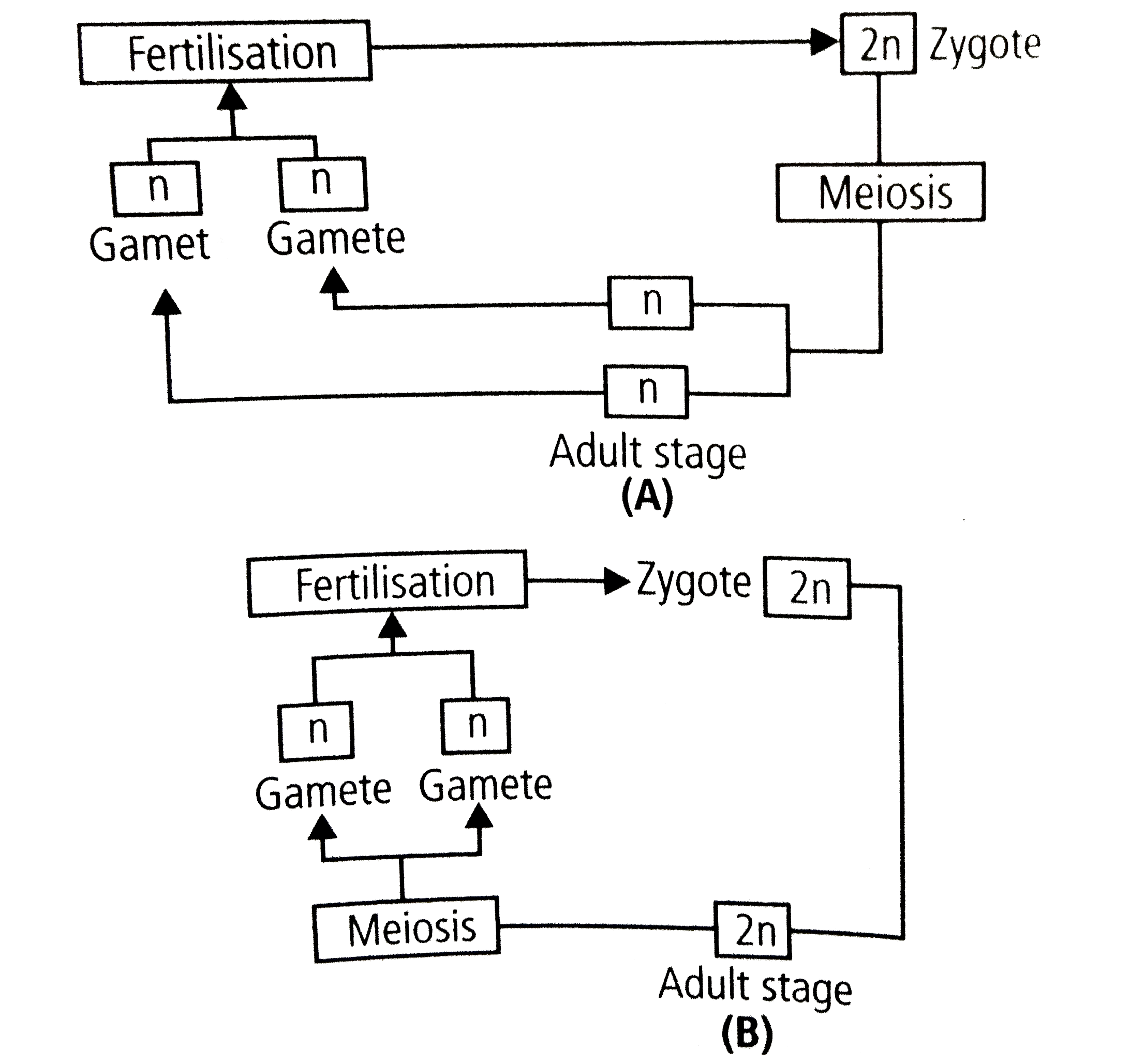In these figures, two life-cycles are described. Mark the correct option.

A
A represents primitive life forms and B represents more advnced life forms.
B
A represents terrestrial life forms and B represents aquatic life forms.
C
A rrepresents asexual reproduction and B represents sexual reproduction.
D
Both flow charts basically represent the same life-cycle.
Video Solution
Text Solution
The correct Answer is:a
In A type of life cycle, the haploid organisms (n) given rise to haplioid gametes, which fuse to form diploid zygote (2n). Meiosis occurs in zygote at the time of germination and is producing haploid individuals. Such kind of the life cycle is called haplontic and is primitive and exhibited in lower groups of plants such as certain algae. In life cycle B, the diploid individual (2n) produces haploid gamets (n) by meiosis, which fuse to form diploid zygote (2n). This is diplontic life cycle in which haploid gametopyhtic somatic phase gets eliminated through progressive evolution. this kind of life cycle is exhibited by higher plants such as gymnosperms and angiosperms.
|
Updated on:21/07/2023
Topper's Solved these Questions
Similar Questions
Knowledge Check
- Question 1 - Select One or More
Mark the correct options.
Aif the far point goes ahead, the power of the divergent lens should be reducedBif the near point goes ahead, the power of the convergent lens should be reduced.CIf the fr points 1 m away form the eye, divergent lens should be used.DIf the near point is 1 m away from the eye, divergent lens should be used - Question 2 - Select One or More
Mark the correct options
AA diode valve can be used as a rectifier.BA triode valve can be used as a rectifierCa diode valve can be used as an amplifier.DA triode valve can be used as an amplifier. - Question 3 - Select One or More
Mark the correct options
AThe luminous efficiency of a monochromati csource is always greater than that of a white light source of same power.Bthe luminous efficiency of a monochromatic source of weavelength 555 m is always greater than that of white light source of same water.CThe iluminating power of a monochromatic source of wavelenght 555 nm is always greater than that of a white light source of same power.Dthe illuminating power of a monochromatic source is always greater than that of a white light soure of same water.
